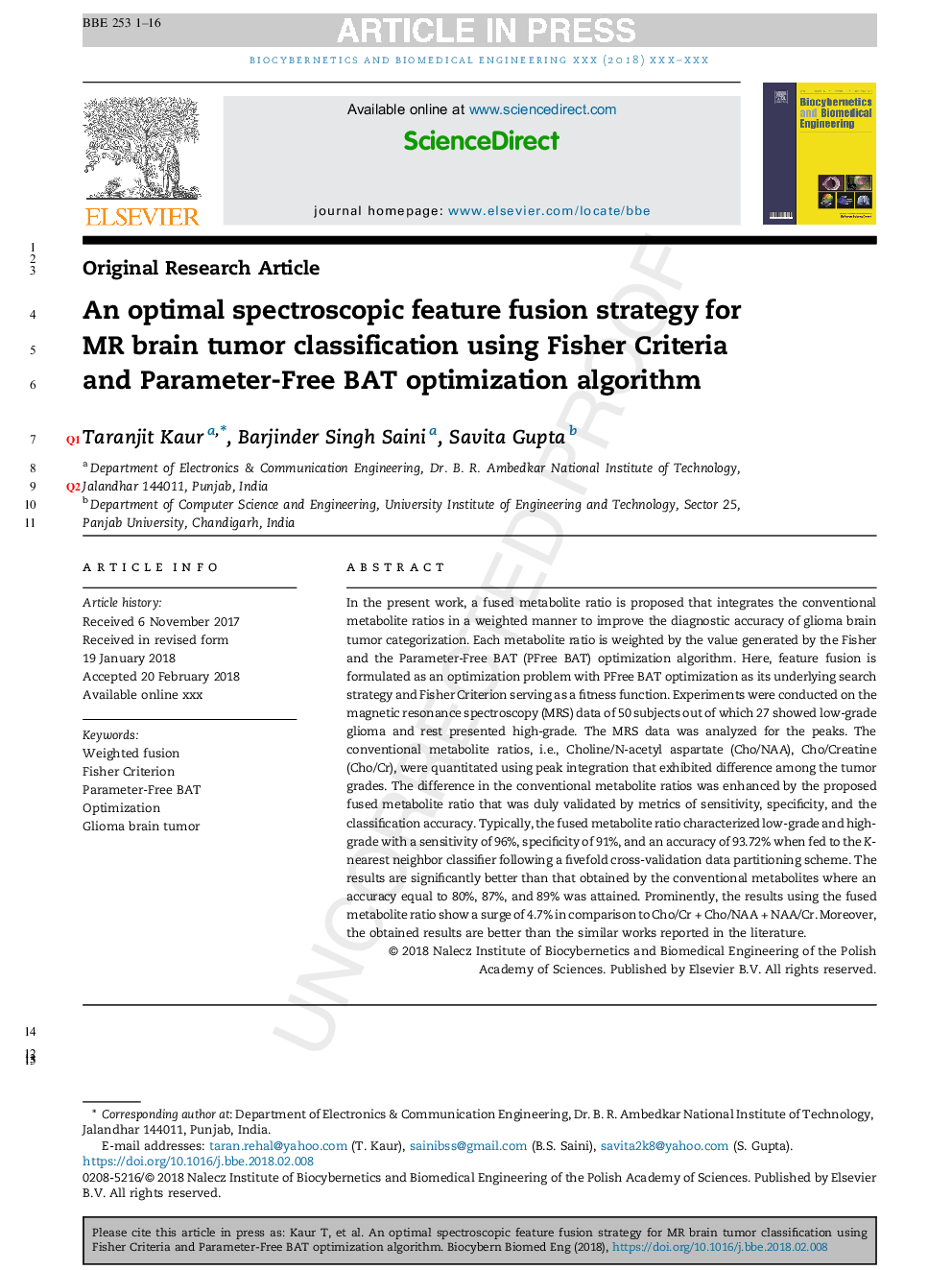| Article ID | Journal | Published Year | Pages | File Type |
|---|---|---|---|---|
| 6484172 | Biocybernetics and Biomedical Engineering | 2018 | 16 Pages |
Abstract
In the present work, a fused metabolite ratio is proposed that integrates the conventional metabolite ratios in a weighted manner to improve the diagnostic accuracy of glioma brain tumor categorization. Each metabolite ratio is weighted by the value generated by the Fisher and the Parameter-Free BAT (PFree BAT) optimization algorithm. Here, feature fusion is formulated as an optimization problem with PFree BAT optimization as its underlying search strategy and Fisher Criterion serving as a fitness function. Experiments were conducted on the magnetic resonance spectroscopy (MRS) data of 50 subjects out of which 27 showed low-grade glioma and rest presented high-grade. The MRS data was analyzed for the peaks. The conventional metabolite ratios, i.e., Choline/N-acetyl aspartate (Cho/NAA), Cho/Creatine (Cho/Cr), were quantitated using peak integration that exhibited difference among the tumor grades. The difference in the conventional metabolite ratios was enhanced by the proposed fused metabolite ratio that was duly validated by metrics of sensitivity, specificity, and the classification accuracy. Typically, the fused metabolite ratio characterized low-grade and high-grade with a sensitivity of 96%, specificity of 91%, and an accuracy of 93.72% when fed to the K-nearest neighbor classifier following a fivefold cross-validation data partitioning scheme. The results are significantly better than that obtained by the conventional metabolites where an accuracy equal to 80%, 87%, and 89% was attained. Prominently, the results using the fused metabolite ratio show a surge of 4.7% in comparison to Cho/Cr + Cho/NAA + NAA/Cr. Moreover, the obtained results are better than the similar works reported in the literature.
Related Topics
Physical Sciences and Engineering
Chemical Engineering
Bioengineering
Authors
Taranjit Kaur, Barjinder Singh Saini, Savita Gupta,
